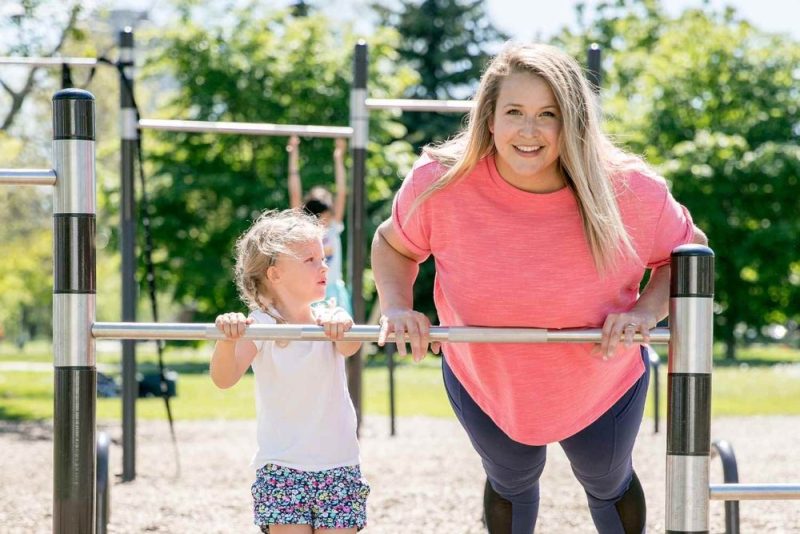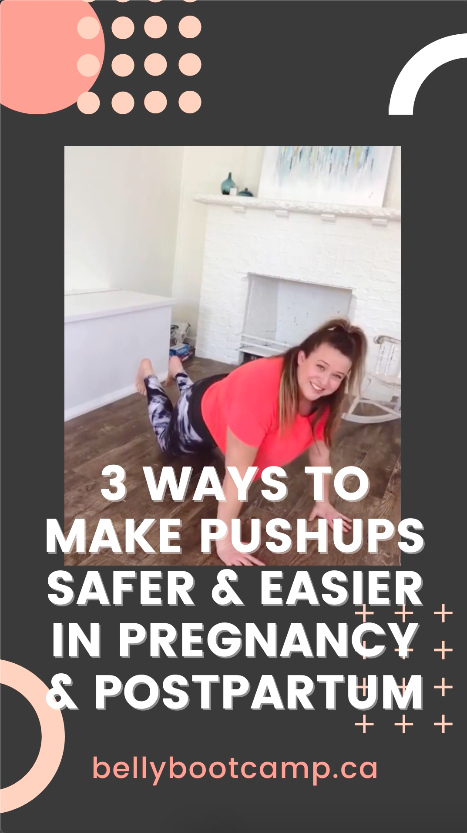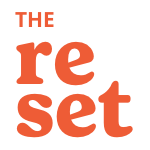
Try these 3 push-up variations to find the one works best for YOU in pregnancy or postpartum, or build up toward full push-ups with these tricks.
The pushup is a beautiful strength, mobility & core training exercise when done in a strong plank position.
When we don’t understand how a pushup should look OR when we pressure ourselves to do them a certain way (like on the floor or from the toes) we risk mis-aligning the muscles of the hips and shoulders and make them less effective & potentially injurious. ?
ARE INCLINE PUSH-UPS STILL EFFECTIVE?
First things first: a push-up is a push-up.
Whether they’re on an incline, on the knees or using a prop – it’s still a push-up, mama! A push-up is a bodyweight pressing exercise which uses the chest, shoulders and arms, as well as the abdominal muscles.
Performing a push-up on knees or on an incline or raised surface simply decreases the amount of body weight one has to press. it’s no different, or less effective, than choosing a lighter weight for any exercise in order to complete it with better form.
FORM TIPS FOR FLOOR OR INCLINE PUSH-UPS
? In a push-up, your core should be aligned just like a plank. A push-up is a plank with movement added!
? Keep your ribs + hips drawn up toward the spine and hands under the shoulders (or maybe slightly wider) as you press actively into your hands and feet/knees.
? As you lower, your elbows should float back & out to form a sort of arrow-shape with your torso, not out wide in a T-shape.
Most importantly: FORM OVER COMPARISON. Focus on an engaged core and more optimal shoulder position instead of comparing your push-up your push-ups before kids OR to some dude on IG who jumps like a flying squirrel between reps.
Try these 3 variations to make push-ups FEEL better in your body AND to progress to the next level with better push-up form!
Descriptions and more resources below video.
1️⃣ MINIBAND: just above elbows to help you lower more slowly and boost you as you press up. Use this to help you progress to a lower surface or begin working on the floor with a bit of support.
2️⃣ STAIRCASE: a perfect prop because its narrowness forces you to bring your elbows back instead of out into a T-shape. Start on stair #3 or #4 and progress lower as your build strength over weeks and months.
3️⃣ NEGATIVES: work on controlling the lowering phase of your pushup to challenge yourself when pushups from the knees feel too easy but from the toes feel impossible. OR do the negatives from the knees when an incline pushup feels too easy. The slower, the harder! This is also a great way to work on keeping plank position through the eccentric/lowering phase.
?These options can also reduce pressure on the pelvic floor if you have symptoms of diastasis recti, pelvic floor dysfunction or pelvic organ prolapse.
Let me know in the comments which one YOU are going to try!
xo
D.
PIN IT TO SHARE

